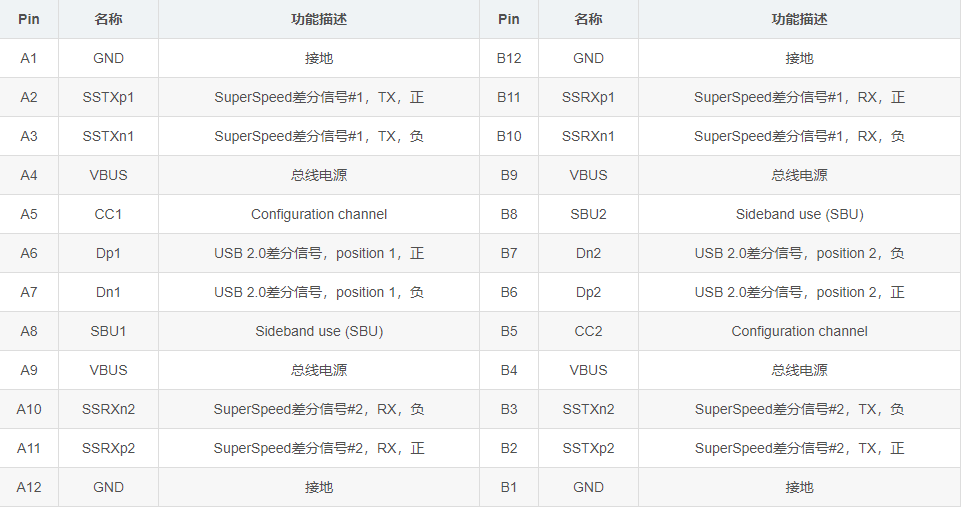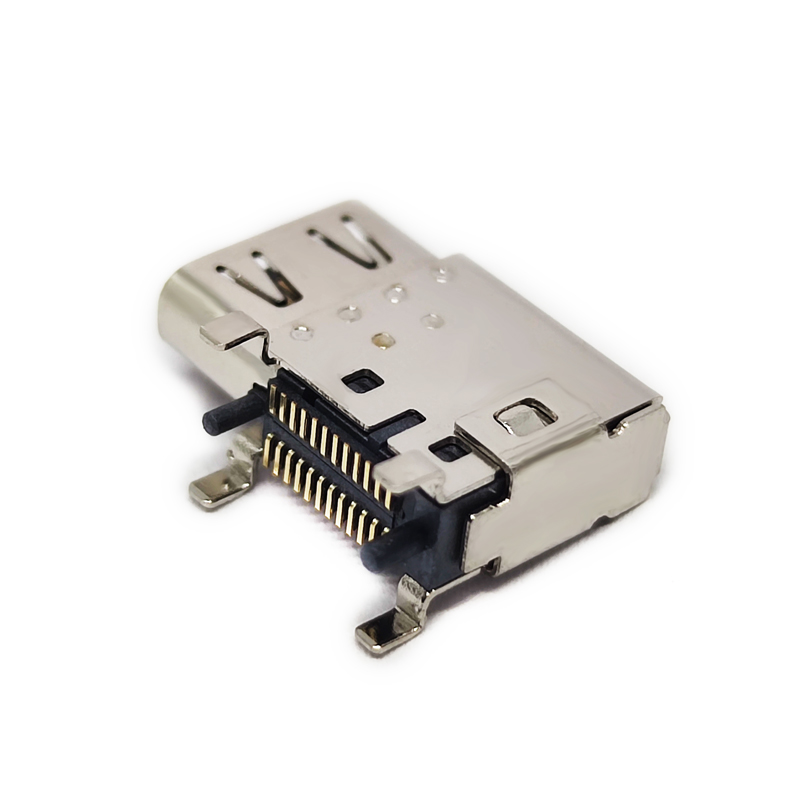As a new type of universal interface, Type-C connectors are widely used in electronic devices such as smartphones, laptops, tablets, etc. due to their small size, forward and reverse plugging, high-speed transmission, and multifunctional integration. The Type-C connector has a total of 24 pins, symmetrically distributed in two rows, with 12 pins per row. The following is a detailed explanation of the function and purpose of each pin:

1. Power Pin (VBUS)
Pin number: A4, A9, B4, B9
Function: Used for power transmission, supporting up to 20V/5A power transmission (100W power).
Purpose: To power or charge devices, supporting fast charging protocols (such as PD protocol).
2. Grounding pin (GND)
Pin number: A1, A12, B1, B12
Function: Provide circuit grounding to ensure the integrity of the current circuit.
Purpose: To ensure electrical safety of equipment and prevent static interference.
3. Differential signal pins (TX/RX)
Pin number:
- TX1+/TX1-: A2, A3
- RX1+/RX1-: B2, B3
- TX2+/TX2-: B10, B11
- RX2+/RX2-: A10, A11
Function: Used for high-speed data transmission and supports USB 3.1/3.2 protocols.
Purpose: To transmit video, audio, and data signals, supporting transmission rates of up to 10Gbps.
4. Configure channel pins (CC1, CC2)
Pin number: A5, B5
Function: Used for device connection detection, power role negotiation, and communication protocol configuration.
Purpose:
-Detect the insertion direction of the device (forward and reverse insertion and removal).
-Negotiate power transmission mode (such as PD protocol).
-Determine the master-slave relationship of the device (Host/Device).
5. Auxiliary signal pins (SBU1, SBU2)
Pin number: A8, B8
Function: Used for transmitting auxiliary signals, such as audio or video signals.
Purpose:
-Support Alternate Mode, such as DisplayPort or HDMI video output.
-Transmitting audio signals (such as headphone functionality).
6. USB 2.0 data pins (D+/D -)
Pin number: A6, A7, B6, B7
Function: Used for USB 2.0 data transfer.
Purpose: Compatible with USB 2.0 devices and supports a transfer rate of 480Mbps.
7. VCONN pin
Pin number: A5 (in some cases)
Function: Power electronic tag cables (such as cables with chips).
Purpose: Supports intelligent cable functions such as cable identity recognition or power management.
8. Shield pins
Function: Used for electromagnetic shielding to reduce signal interference.
Purpose: To improve the stability and anti-interference ability of signal transmission.

Multi functional features of Type-C connectors
The Type-C connector supports multiple functions through flexible pin configuration:
1. High speed data transfer: Supports protocols such as USB 3.1/3.2 and Thunderbolt 3, with a transfer rate of up to 40Gbps.
2. High power charging: Supports PD protocol and can provide up to 100W of power.
3. Video output: Supports video output such as DisplayPort and HDMI through Alternate Mode.
4. Audio transmission: Supports digital audio output and can be used for headphones or external speakers.
5. Front and back plugging: Symmetrical design, no need to distinguish between front and back, more convenient to use.
Type-C connectors have become a standard interface for modern electronic devices due to their powerful functionality and flexible pin design. By understanding the function and purpose of each pin, we can better understand the working principle of Type-C connectors and fully utilize their multifunctional features to provide more efficient and convenient connection solutions for devices.

